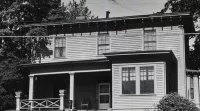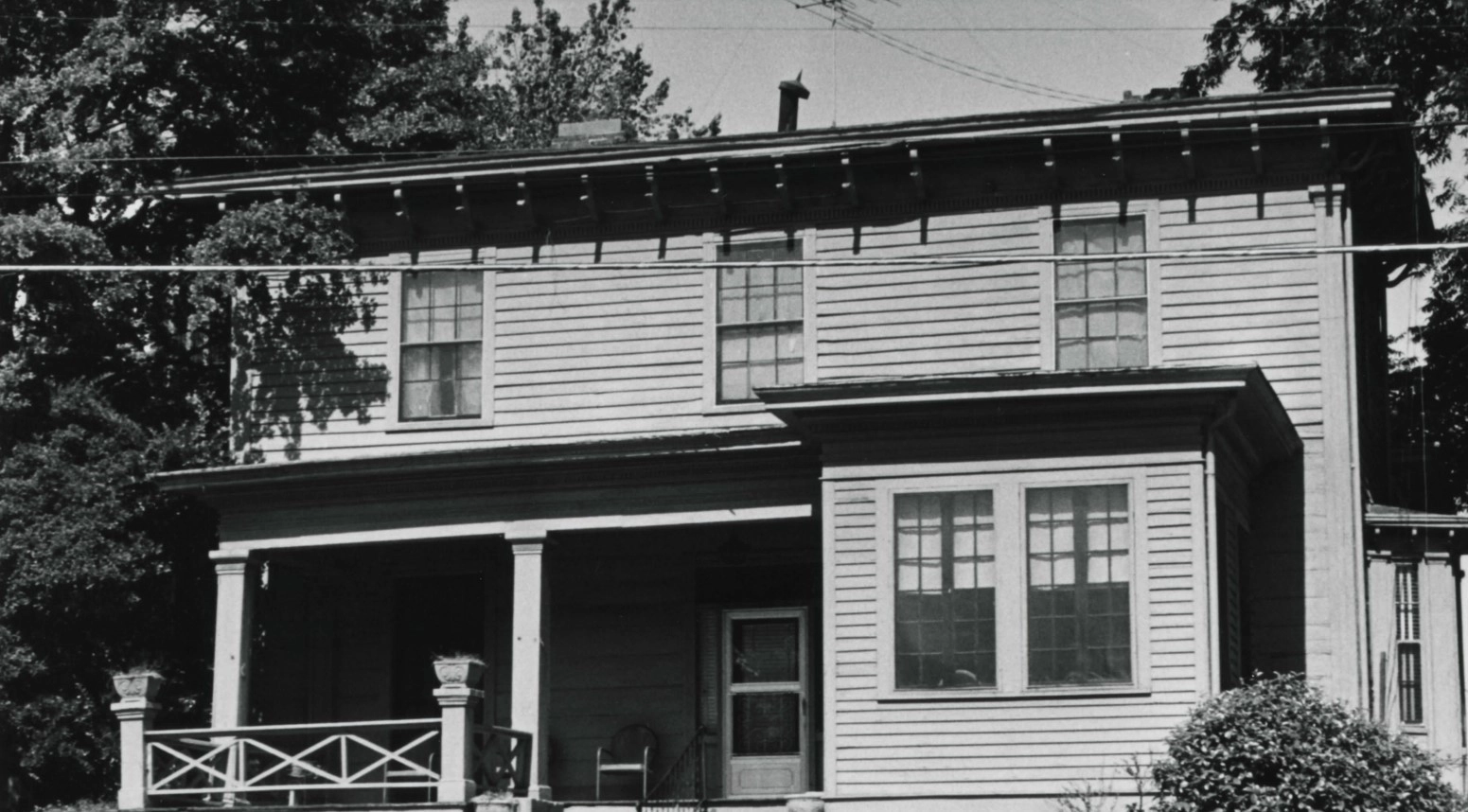Share what you know,
and discover more.
Share what you know,
and discover more.
Mar 21, 1979

-

- Charmaine Bantugan
National Register of Historic Places - Rogers-Bagley-Daniels-Pegues House
Statement of Significance: The Rogers-Bagley-Daniels-Pegues House is a striking example of Greek Revival architecture with distinctive Italianate accents, one of the few surviving antebellum structures in the southern part of the original area of the city of Raleigh. The house is distinguished by a bracketed entablature of unusual detail and a notable doorway and screen dividing the center hall. The Rogers-Bagley-Daniels-Pegues House has been associated with a series of leading figures in local, state, and national history. The builder, Sion Hart Rogers, was a prominent political figure before and after the Civil War, being elected to Congress on two occasions and serving as attorney general of North Carolina during and after the Civil War. Major William J. Bagley was also an important politician serving in the North Carolina Senate during the Civil War and as the clerk of the North Carolina Supreme Court for nineteen years. Major Bagley's son, Worth, was the first American officer killed in the Spanish-American War. The Bagley’s' son-in-law, Josephus Daniels, distinguished himself not only as a journalist and newspaper editor but also as the chief clerk of the Department of the Interior under President Cleveland, the secretary of the Navy during President Wilson's entire tenure in the White House, and as ambassador to Mexico during the first nine years of Franklin D. Roosevelt's presidency. Dr. Albert W. Pegues, who purchased the house from Major Bagley's widow, was a noted black educator, serving as dean of the Theological Department at nearby Shaw University for 10 years.
National Register of Historic Places - Rogers-Bagley-Daniels-Pegues House
Statement of Significance: The Rogers-Bagley-Daniels-Pegues House is a striking example of Greek Revival architecture with distinctive Italianate accents, one of the few surviving antebellum structures in the southern part of the original area of the city of Raleigh. The house is distinguished by a bracketed entablature of unusual detail and a notable doorway and screen dividing the center hall. The Rogers-Bagley-Daniels-Pegues House has been associated with a series of leading figures in local, state, and national history. The builder, Sion Hart Rogers, was a prominent political figure before and after the Civil War, being elected to Congress on two occasions and serving as attorney general of North Carolina during and after the Civil War. Major William J. Bagley was also an important politician serving in the North Carolina Senate during the Civil War and as the clerk of the North Carolina Supreme Court for nineteen years. Major Bagley's son, Worth, was the first American officer killed in the Spanish-American War. The Bagley’s' son-in-law, Josephus Daniels, distinguished himself not only as a journalist and newspaper editor but also as the chief clerk of the Department of the Interior under President Cleveland, the secretary of the Navy during President Wilson's entire tenure in the White House, and as ambassador to Mexico during the first nine years of Franklin D. Roosevelt's presidency. Dr. Albert W. Pegues, who purchased the house from Major Bagley's widow, was a noted black educator, serving as dean of the Theological Department at nearby Shaw University for 10 years.
Mar 21, 1979
National Register of Historic Places - Rogers-Bagley-Daniels-Pegues House
Statement of Significance:The Rogers-Bagley-Daniels-Pegues House is a striking example of Greek Revival architecture with distinctive Italianate accents, one of the few surviving antebellum structures in the southern part of the original area of the city of Raleigh. The house is distinguished by a bracketed entablature of unusual detail and a notable doorway and screen dividing the center hall. The Rogers-Bagley-Daniels-Pegues House has been associated with a series of leading figures in local, state, and national history. The builder, Sion Hart Rogers, was a prominent political figure before and after the Civil War, being elected to Congress on two occasions and serving as attorney general of North Carolina during and after the Civil War. Major William J. Bagley was also an important politician serving in the North Carolina Senate during the Civil War and as the clerk of the North Carolina Supreme Court for nineteen years. Major Bagley's son, Worth, was the first American officer killed in the Spanish-American War. The Bagley’s' son-in-law, Josephus Daniels, distinguished himself not only as a journalist and newspaper editor but also as the chief clerk of the Department of the Interior under President Cleveland, the secretary of the Navy during President Wilson's entire tenure in the White House, and as ambassador to Mexico during the first nine years of Franklin D. Roosevelt's presidency. Dr. Albert W. Pegues, who purchased the house from Major Bagley's widow, was a noted black educator, serving as dean of the Theological Department at nearby Shaw University for 10 years.
Posted Date
Sep 05, 2023
Historical Record Date
Mar 21, 1979
Source Name
National Register of Historic Places
Source Website
Delete Story
Are you sure you want to delete this story?










